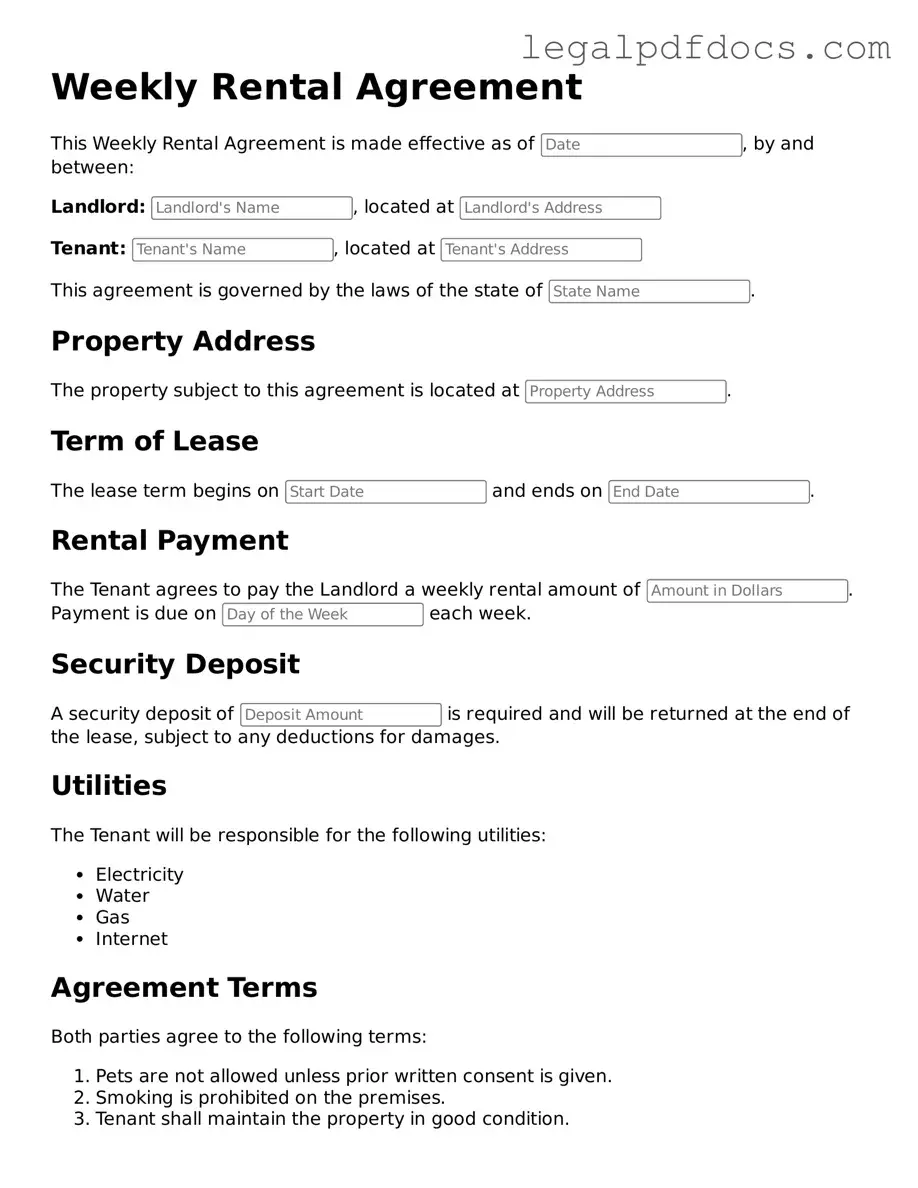Weekly Rental Agreement Template
The Weekly Rental Agreement is a document that outlines the terms and conditions for renting a property on a weekly basis. This agreement serves to protect both the landlord and the tenant by clearly defining their rights and responsibilities. To ensure a smooth rental experience, it is essential to fill out the form accurately and completely.
Click the button below to fill out the Weekly Rental Agreement form.
Open Weekly Rental Agreement Editor Here
